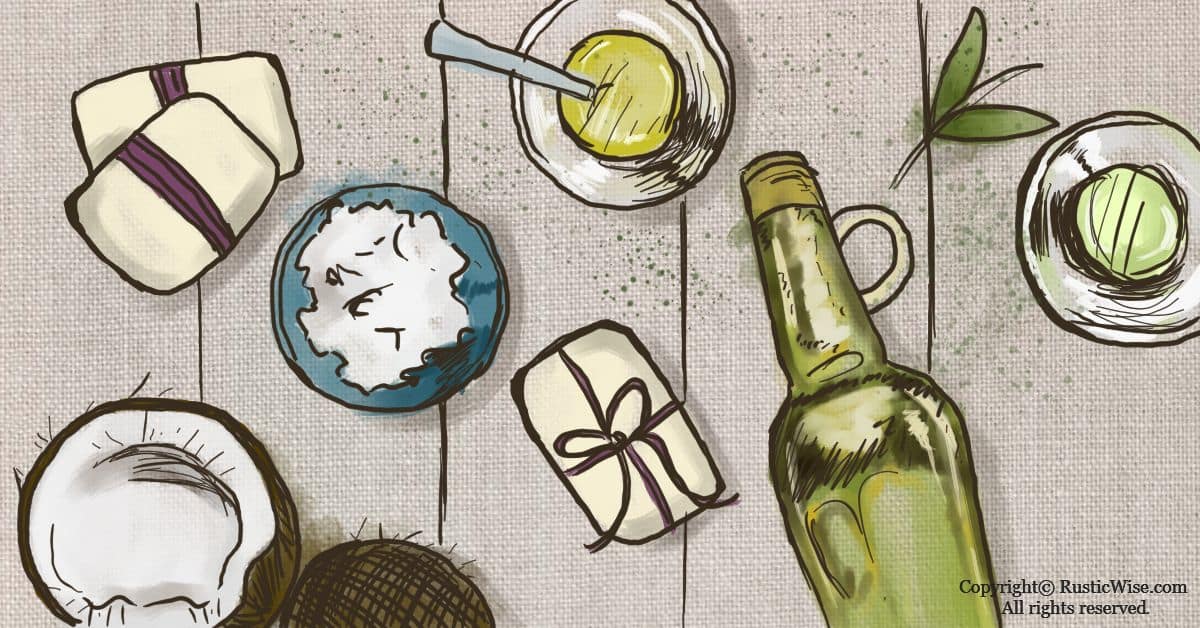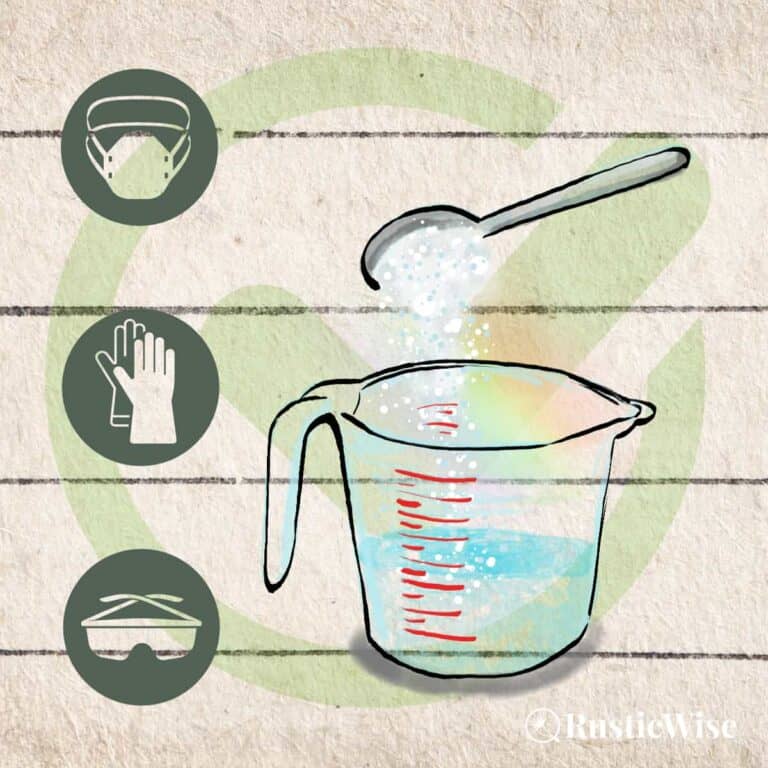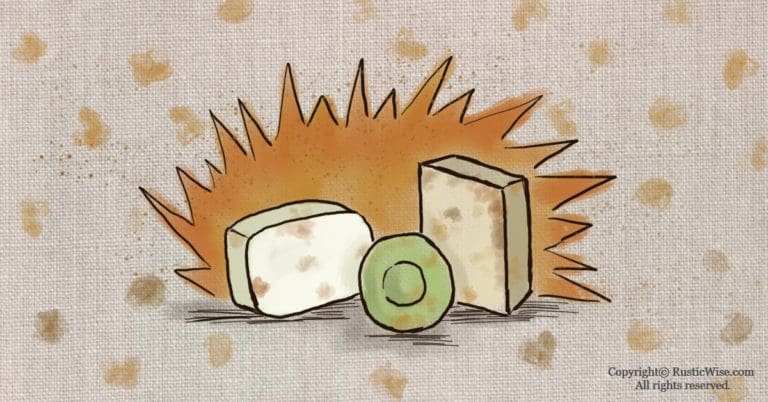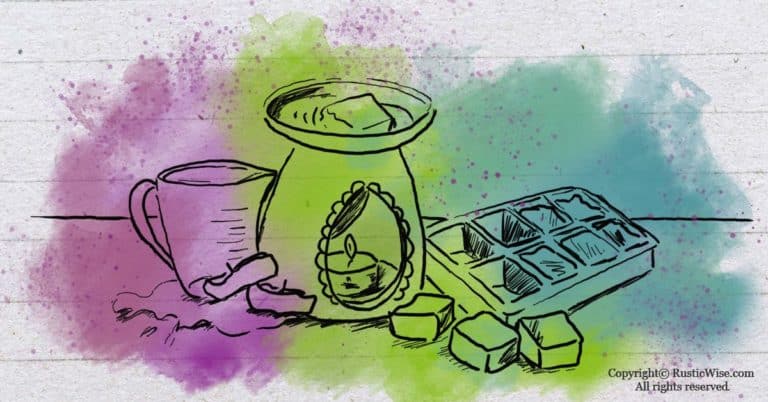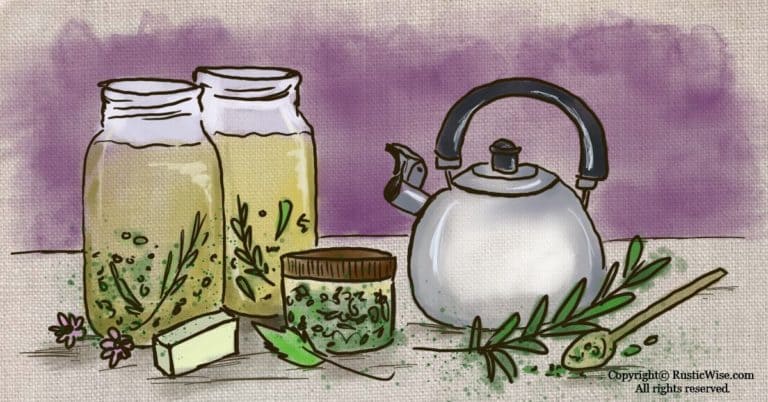The Role of Iodine in Soap Making (Iodine Value and INS)
Soap making is part art, part science. You can get creative with soap designs, colors, fragrances, and ingredients. However, measurements and numbers ensure you’re not left with a gooey mess. Understanding how iodine in soap making works helps you in the quest for a better bar of soap. The Iodine Value indicates the level of unsaturated fats or oils. The INS number combines the iodine level and SAP value to determine physical qualities of a soap bar. The ideal INS is 160, but this is just a historical guideline.
In the quest for making the perfect (or near-perfect) bar of soap, it’s important to remember that Iodine Value and INS are meant to be general guidelines only. You don’t need to be a stickler for the rules!
However, these numbers are helpful in understanding the qualities of a good bar of soap. INS and Iodine value are also handy when developing your own soap recipes.
Many soapers never really look much into iodine in soap, because, well, it’s a pretty dry topic. We know you’d much rather look into how to perfect your swirls or infuse your own oils for soapmaking. But for those of you who want to up your sopapmaking game, put on your thinking caps, and let’s dive into the crazy world of iodine!
What exactly is iodine in soap?
You may be familiar with iodine as it relates to food, but what exactly is iodine in soap? First, let’s take a look at the Iodine Value, aka Iodine Number.
The Handcrafted Soap & Cosmetic Guild (HSCG) defines Iodine Value as, “The measure of unsaturation (referring to presence of double bonds) in a fat or oil.”
SoapCalc defines Iodine Value as the, “number of grams of iodine that will react with the double bonds in 100 grams of fats or oils.”
So, the Iodine Value is simply a number given to individual oils and fats as to how much unsaturated fats are present. Saturated fats take up no iodine and therefore have an iodine number of zero (or close to zero). More specifically, the iodine number measures how much iodine (in grams) can be dissolved by 100 grams of a selected oil, fat, or wax.
General rule: Lower Iodine Values: harder soap bar, less conditioning. Higher Iodine Values: softer soap bar, more conditioning.
So, you could say that Iodine Value and INS play a role in determining handmade soap’s stability and shelf life. It also indicates the soap’s hardness and conditioning values.
Helpful tips to keep in mind:
- Oils or fats with lower Iodine Values tend to reach trace more quickly.
- To achieve a thicker soap batter consistency, keep Iodine Value around or below 50.
- To achieve a thinner soap batter consistency (for making swirls), keep Iodine Value between 50-65.
- Having lower or higher Iodine values isn’t “good or bad.” Most quality bars of soap are made with a mixture of both unsaturated and saturated fats/oils.
- Soaps with a higher Iodine Value are also higher in linoleic and linolenic fatty acids.
To give you an idea of Iodine Values of your favorite soapmaking oils and fats, check out the table below.
Table of Iodine Values in Oils and Fats
| Oil/Fat Type | Iodine Value |
|---|---|
| Fully hydrogenated fats, waxes | 1–3 |
| Coconut oil | 6–11 |
| Babassu oil | 13–17 |
| Palm kernel oil | 14–21 |
| Palm kernel olein | 20–28 |
| Butter fat | 25–42 |
| Tallow (beef) | 40–55 |
| Cocoa butter | 34–40 |
| Lard | 48–65 |
| Palm oil | 50–55 |
| Palm olein | 56–72 |
| Peanut oil | 86–107 |
| Cottonseed oil | 100–115 |
| Maize oil (corn) | 107–135 |
| Sesame oil | 104–120 |
| Canola (low erucic rapeseed) | 105–126 |
| Wheat germ oil | 115–126 |
| Sunflower seed oil | 118–141 |
| Sunflower seed oil, mid-oleic | 94–122 |
| Sunflower seed oil, high oleic | 81–91 |
| Soybean oil | 124–139 |
| Safflower seed oil | 136–148 |
| Safflower seed oil, high oleic | 82–92 |
| Chia seed oil | 209–211 |
| Oleic acid-triglyceride (theoretical value) | 86 |
| Linoleic acid-triglyceride (theoretical value) | 173 |
| Linolenic acid-triglyceride (theoretical value) | 262 |
Why you should be careful with very high Iodine Values in soap
Homemade soap recipes with higher Iodine Values make a softer soap. While not always the case, these soaps are more prone to rancidity, or developing dreaded orange spots (DOS).
Softer soaps generally have a shorter shelf life. You may find DOS appear anytime from the curing time, to several months afterwards. While soaps with orange spots are still safe to use, sometimes DOS are accompanied by a rancid smell. And nobody wants stinky soap, right?
If you’re looking to lower the Iodine Value in your soap recipe, the best bet is to select oils or fats with lower Iodine numbers based on the table above.
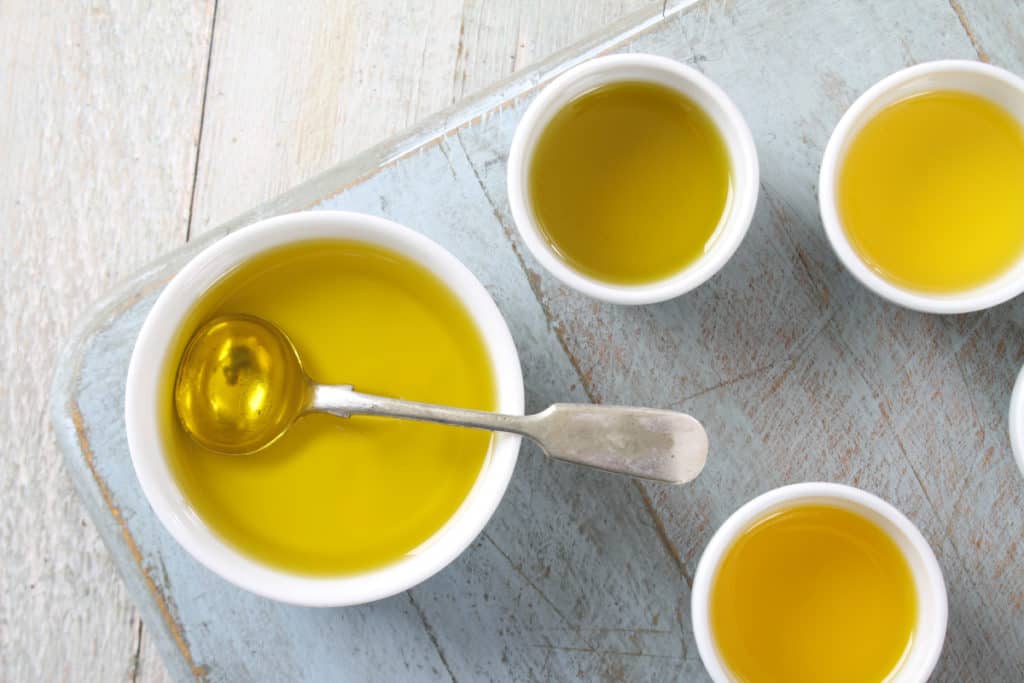
What’s the INS number in soap?
So now that we have a basic understanding of Iodine Value, let’s look at the INS number.
The INS value is a measurement based on the Iodine Value and the SAP value. It predicts certain qualities in a bar of soap. The INS indicates roughly how easy it is to saponify fats or oils in a soap recipe. It also indicates the hardness, lather, and conditioning quality.
There’s some uncertainty to what exactly “INS” stands for, but it’s widely believed to be short for “Iodine ’n SAP.” The SAP, or saponification value is a number which indicates how much sodium or potassium hydroxide (NaOH, or KOH) is needed to completely saponify a measurement of oil or fat.
Dr. Robert S. McDaniel is attributed with coining the term INS in his book, “Essentially Soap.” McDaniel says the ideal INS value is 160. Most home soapmakers don’t follow this rule too closely. SoapCalc says an INS value range of 136-170 produces a good bar of soap.
If you wanted to get your hands on a copy of the book, you’re unfortunately out of luck as it’s no longer in print. But you also calculate the INS manually, or with the help of a soap calculator.
To manually calculate the INS, subtract the Iodine value from the KOH SAP Value: Estimate of INS = KOH SAP Value - Iodine Value
Back in the day, the INS was very handy for commercial, or large-scale soap manufacturers. It gives them a rough idea of the shelf life of a soap batch with a number-at-a-glance. Nowadays, smaller-scale soapmakers use INS to a lesser degree.
What makes a good bar of soap?
So now that we’ve taken a closer look at iodine in soap, as well as INS, where does this all fit in? While everyone has different ideas of what makes the perfect bar of soap, generally, a good bar of soap strikes a balance between the following qualities:
- Bubbly: How easily a soap creates bubbly lather. The “bubble” factor can range from a creamier lather to a foamy lather. Many commercially-made soaps have a high bubbly factor.
- Cleansing: While all soap cleanses, some soaps have a higher cleansing factor. Some higher-cleansing soaps may dry out your skin.
- Conditioning: An indication of a soap’s gentleness on the skin. Olive oil based soaps are mild and conditioning.
- Creamy: How easily a soap develops a creamy lather. Soaps high on the bubbly scale, typically have a less creamy lather (and vice versa).
- Hardness: An indication of the firmness of a bar of soap. Harder soap bars typically have a longer shelf life.
- Iodine Value/Number: An indication of the hardness and conditioning qualities of the soap.
- INS: An indication of a soap’s hardness, conditioning, lather, and stability.
The great thing with making your own soap at home is you can craft a bar of soap according to your own wants and needs. Want a mild bar of soap with conditioning properties? Add some olive oil. Want a harder bar of soap? Coconut oil is a good bet. More creamy lather? Try castor oil.
Do you need to use INS numbers to make soap?
No, many soapmakers don’t account for INS numbers at all and still make good bars of soap. Whether you decide to account for INS is completely up to you. INS and Iodine Value are just one measurement, one piece of the soapmaking puzzle.
But, having a basic understanding of Iodine Value and INS doesn’t hurt. The more you understand about various factors that affect the finished product, the better soap you’ll be able to make. And that’s something we can all strive for.
Hopefully this article helps to clear a few cobwebs when it comes to iodine in soap!
New to making soap? 🧼❓
👉We have a fantastic overview on the whole soapmaking process here: read our Timeless Guide To Soapmaking.
If you would like to see our soapmaking posts organized by topic type, see our Soapmaking Collection.
Would you like more timeless tips via email?
Fun tips to help you live an independent, self-sustaining lifestyle. Opt-out at any time.


References:
- Handcrafted Soap & Cosmetic Guild (HSCG), Glossary of Soap-Related Terms, https://www.soapguild.org/how-to/make-soap/soap-glossary.php. Accessed March 2021.
- Soap Craft Wiki, Iodine, https://soapcraftwiki.com/index.php?title=Iodine, Accessed March 2021.
- ScienceDirect, Iodine Value, https://www.sciencedirect.com/topics/agricultural-and-biological-sciences/iodine-value. Accessed March 2021.
- SoapCalc, Soap Bar Qualities, http://soapcalc.net/info/SoapQualities.asp. Accessed March 2021.

Author: Josh Tesolin
Josh is co-founder of RusticWise. When he’s not tinkering in the garden, or fixing something around the house, you can find him working on a vast array of random side projects.

